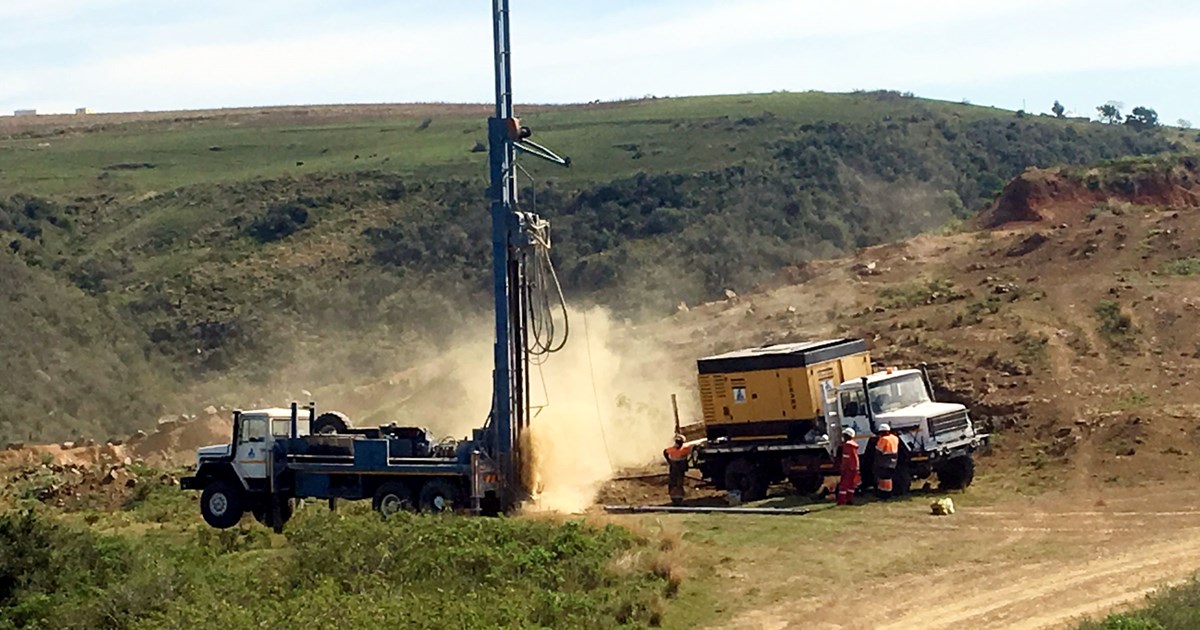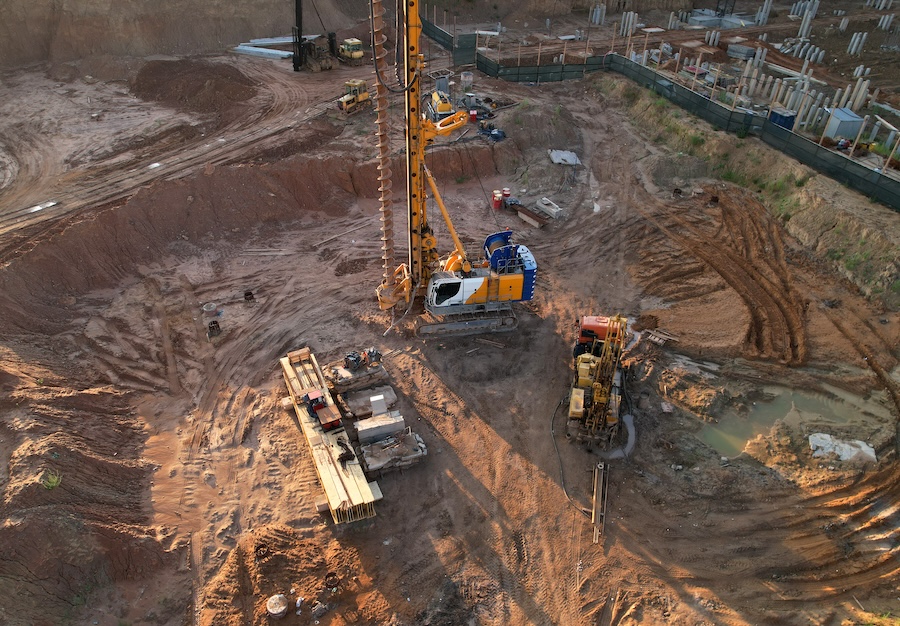Exploring the Interdisciplinary Nature of Geotechnical Engineering and Its Impact on Ground Enhancement and Structure Design
By incorporating understandings from structural, ecological, and geological techniques, geotechnical designers are outfitted to address complicated soil behaviors and site-specific challenges. This collective method not only enhances the efficacy of strategies such as soil stabilization and vibrant compaction yet additionally ensures that projects stick to sustainability principles.
Summary of Geotechnical Engineering
Geotechnical engineering is a critical branch of civil engineering that concentrates on the actions of planet products and their interaction with frameworks. This self-control includes the research study of groundwater, rock, and soil, intending to recognize their residential properties and exactly how they influence the efficiency of civil design tasks. Geotechnical engineers assess the mechanical and hydraulic behavior of these products to make certain the security and safety and security of frameworks such as buildings, bridges, and maintaining walls.
The scope of geotechnical design consists of website investigations, soil tasting, and screening, in addition to analysis of soil auto mechanics and rock mechanics. Designers utilize innovative techniques to review ground conditions, recognize possible dangers, and design efficient ground renovation options. This may entail approaches such as soil stablizing, grouting, and using geosynthetics, which improve the strength and toughness of the ground.
In addition, geotechnical engineering plays a crucial duty in structure design, establishing suitable structure kinds based upon soil attributes and filling conditions. By including rigorous screening and analysis, geotechnical engineers contribute dramatically to the sustainability and resilience of framework, ensuring that frameworks can withstand environmental and functional tensions with time.
Key Interdisciplinary Relationships

Additionally, ecological design plays a vital duty in assessing the effect of geotechnical tasks on the surrounding environment. This collaboration is vital for establishing sustainable methods that decrease ecological degradation throughout excavation or ground improvement processes.
Furthermore, the combination of geotechnical engineering with geology enhances the understanding of subsurface conditions, assisting in even more precise site characterizations (geotechnical engineer description). This partnership aids in risk assessment, especially in locations prone to landslides or seismic activity, thereby educating risk reduction strategies
Lastly, innovations in technology have brought about interdisciplinary cooperation with information scientific research and geoinformatics. These areas add to boosted modeling and evaluation strategies, permitting a lot more accurate predictions of dirt habits under different conditions. Thus, the interconnectedness of these disciplines improves geotechnical design, advertising development and efficiency in structure style and ground enhancement.
Ground Enhancement Techniques
Ground renovation methods are necessary techniques utilized to boost the design homes of soil, thereby boosting its load-bearing capacity and security. These methods are particularly crucial in areas where all-natural dirt problems are inadequate for supporting architectural loads or where environmental elements may endanger soil honesty.
Commonalities improvement approaches include dirt compaction, which boosts thickness and lowers void areas, and grouting, which involves infusing materials right into soil to load voids and bind bits with each other - geotechnical companies in south africa. Various other methods consist of the setup of dirt try this nails and supports, which give extra assistance, and the use of geosynthetics to strengthen dirt structures. Deep mixing techniques, such as soil-cement columns, can also significantly enhance the toughness and stiffness of weak dirts
Furthermore, vibrant compaction and vibro-replacement techniques are usually employed to boost dirt residential properties in situ. These methods can minimize issues associated with settlement and liquefaction, specifically in seismic areas. By utilizing a mix of these cutting-edge techniques, geotechnical engineers can properly resolve site-specific challenges, guaranteeing that the structure systems will perform effectively under prepared for loading problems, therefore adding to total project success.
Foundation Design Factors To Consider
Effective foundation design considerations are crucial for the durability and stability of structures. A well-designed structure must sufficiently sustain the load of the building while fitting soil conditions, environmental aspects, and possible adjustments with time. Trick variables consist of dirt bearing capability, settlement features, and groundwater problems.
Recognizing the dirt profile through geotechnical investigations is important, as it informs the selection of foundation type-- be it superficial, deep, or specialized approaches such as stack structures or floor covering foundations. The awaited lots, including live, dead, and ecological tons, must be properly determined to guarantee the structure can resist potential failing systems, such as moving, reversing, or excessive settlement.
Furthermore, considerations for frost deepness, seismic activity, and potential soil liquefaction in seismic zones are vital. Furthermore, drain and wetness control should be integrated right into the foundation layout to alleviate concerns connected to hydrostatic pressure and dirt erosion.
Cooperation among engineers, engineers, and geotechnical professionals is click to read vital to create an extensive structure design that not only fulfills regulatory demands but also makes certain the long-lasting efficiency and safety of the structure. Ultimately, complete planning and cutting-edge options are necessary to attend to the intricacies fundamental in foundation style.
Case Research Studies and Ideal Practices

One significant instance research involves the usage of deep soil mixing in a skyscraper project in a seismic zone. This method considerably enhanced the soil's toughness and security, permitting a more secure and a lot more efficient structure system (geotechnical companies in south africa). The task highlighted the value of selecting appropriate ground renovation methods based upon site-specific conditions, including soil type and loading demands
Another instance is the application of dynamic compaction for enhancing the bearing capability of weak dirts below an industrial center. This method effectively lowered negotiation worries and boosted general site performance, showing the performance of integrating traditional design exercise with contemporary technology.
Finest practices stemmed from these study emphasize the need of thorough website investigations, partnership amongst multidisciplinary groups, and the incorporation of innovative modeling devices. By adopting these lessons, geotechnical engineers can enhance structure styles and ground improvement methods, inevitably leading to safer and extra sustainable building end results.
Verdict
To conclude, the interdisciplinary nature of geotechnical engineering significantly boosts ground renovation and structure layout. By integrating principles from various engineering self-controls, customized methods are established to attend to certain challenges associated with soil properties and environmental impacts. This collective method not only ensures optimal foundation stability and safety yet additionally promotes sustainable construction techniques. Proceeded expedition of these interdisciplinary partnerships will additionally progress the area, bring about cutting-edge remedies that respond successfully to progressing engineering needs.
The range of geotechnical design includes website examinations, soil tasting, and testing, as well as evaluation of soil technicians and rock mechanics. The relationship between geotechnical design and architectural engineering is specifically important, as the performance of frameworks is greatly influenced by soil actions and buildings.Usual ground enhancement click this link approaches include soil compaction, which raises density and lowers void spaces, and grouting, which entails injecting products into dirt to load voids and bind fragments together. Various other strategies include the setup of soil nails and supports, which provide extra support, and the use of geosynthetics to enhance dirt structures. A properly designed foundation must appropriately support the lots of the building while fitting dirt problems, ecological aspects, and possible adjustments over time.
Comments on “Leading Geotechnical Companies in South Africa: That You Need to Know”